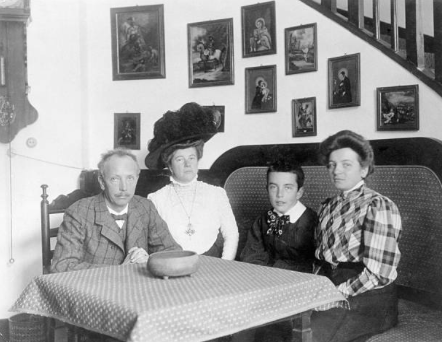|
| This is my post from this week's Tuesday Blog. |
In the second of our three-part series on orchestral works by Richard Strauss, I propose listening to a Cover 2 Cover share from the Rudolf Kempe/Staatskapelle Dresden “Complete Strauss” set, originally released in the mid-1970’sby EMI.
These recordings have been well and justifiably praised since their initial release; the Staatskapelle is one of the oldest and finest of Germany's many outstanding orchestras,and take pride in having premiered several of Strauss' operas and were a favorite orchestra of the composer/conductor. Kempe, who was born and trained in Dresden, began his musical career as an oboist, perhaps explaining why his performances stand out for their transparency particularly in woodwind detail. Listening to his performances of the many popular tone poems, what immediately distinquishes them from the competition is the way he often holds back the brass or tutti ensemble to reveal much of the delicate interior wind writing. In short, both the orchestra and their conductor know their Richard Strauss!
When Strauss began composing the Sinfonia Domestica, he intended it to be the sequel to Ein Heldenleben, the next installment of the autobiography of the now-successful artist. Where Heldenleben is more popular and, dare I say, pompous and not at all self-effacing, this “symphony” is more subtle. The most detailed exposition of the work's structure was provided for the Berlin Philharmonic's performance on December 12, 1904. On that occasion, the concert programme carried the following outline:
Although we think of Strauss as a composer of operas and epic tone poems, he left us with a large amount of songs and a few concerti among which we have a pair of horn concertos, an oboe concerto, his Burleske for piano and orchestra and Don Quixote, which straddle both the tone poem and concertante genres,I. Introduction and development of the chief groups of themes; The husband's themes (Easy-going , dreamy, surly, and fiery), the wife's themes (Lively and gay, grazioso
II. Scherzo; Parents' happiness. Childish play. Cradle song [quotation from Felix Mendelssohn's "Venetian Boat Song", Op. 19b, No. 6 from Songs Without Words] (The clock strikes seven in the evening).
III. Adagio; Doing and thinking. Love scene. Dreams and cares (the clock strikes seven in the morning).
IV. Finale; Awakening and merry dispute. Joyous confusion.
Strauss’ violin concerto was written during the composer's teenage years while he was still attending his last two years of school, and is less distinctive than many of his later orchestral works. Despite this it contains some bold and inventive solo writing as well as occasional passages that hint at the composer's mature harmonic style.
Though written in the romantic tradition, it hints at the young composer's reverence of masters of the preceding classical period, especially Mozart and Beethoven. Although it is today rarely performed, it received encouraging reviews.
Richard STRAUSS (1864-1949)
Violin Concerto in D minor, Op. 8 (TrV 110)
(Ulf Hoelscher, violin)
Sinfonia Domestica for orchestra, Op. 53 (TrV 209)
Dresden Staatskapelle
Rudolf Kempe, conducting
Brilliant - #7591/4
Details - https://www.allmusic.com/album/richa...a-mw0001566312
Internet Archive - https://archive.org/details/04SinfoniaDomesticaOp.53


No comments:
Post a Comment